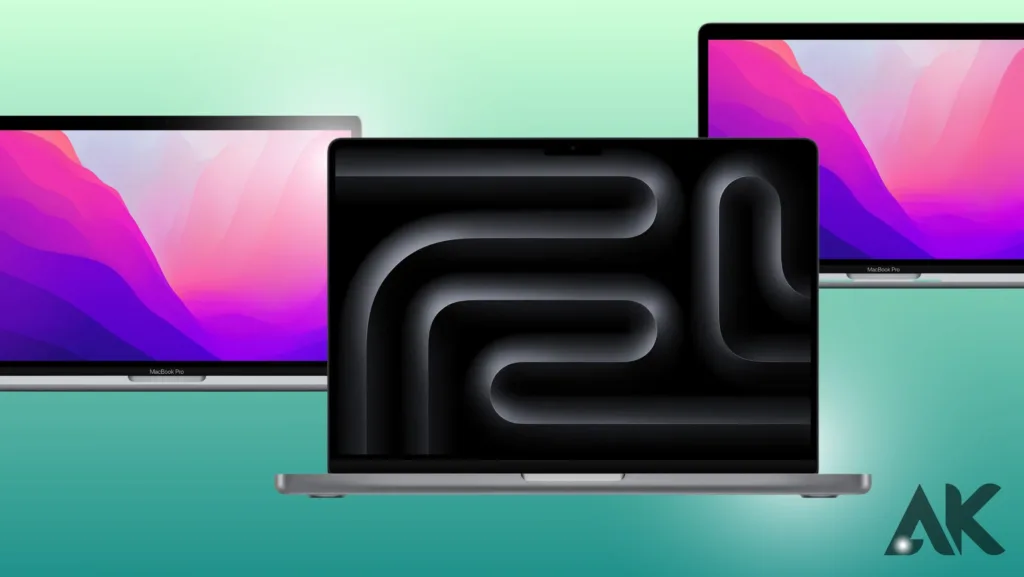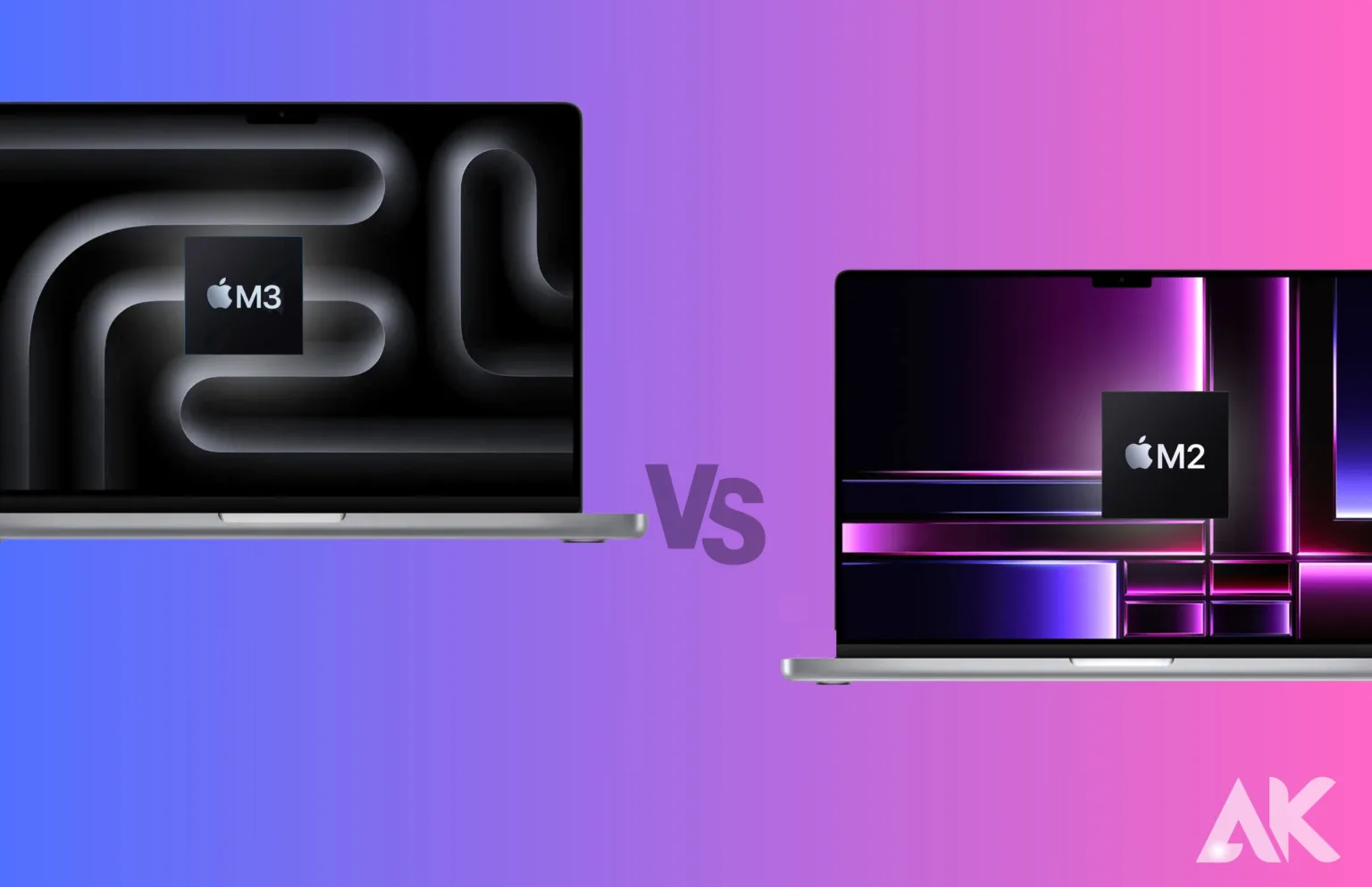M3 MacBook Pro vs M2 MacBook Pro: Finally, the MacBook Pro M3 from Apple is out, and although we haven’t concluded our review yet (stay tuned), we have a fair sense of how much better it is than its predecessors.
While the new M3 series of MacBook Pros bear little resemblance to their predecessors, they are driven by a more potent and competent Apple M3 chip than the Apple M2 chip that drove the prior model.
As well as a whole new price structure, the 14- and 16-inch MacBook Pros are now offered with all three of the M3 family’s chips: M3, M3 Pro, or M3 Max.
M3 MacBook Pro vs M2 MacBook Pro: Price And Availability

The M3 MacBook Pro may be purchased here. Apple’s new M3-Powered Pros are currently on sale, with shipments beginning on November 7. With the M3 processor (8-core CPU, 10-core GPU), 8GB of unified memory, and 256GB of storage, the starting price for the 14-inch device is $1,599. The 14-inch MacBook Pro with an M3 Max processor, which packs a 16-core CPU and a 40-core GPU, 128GB of RAM, and 8TB of storage, is available for $6,899. From there, you may expand the chip, RAM, or storage.
The starting price of the 16-inch MacBook Pro is $2,499; it isn’t available with an M3 processor. In exchange, you receive the bigger 16-inch MacBook Pro with 512GB of storage, 18GB of RAM, and an M3 Pro processor (12-core CPU, 18-core GPU). Upgrading it to an M3 Max processor with a 16-core CPU, 40-core GPU, 128GB of RAM, and 8TB of storage will cost you $7,199, but it will provide you the same functionality as its smaller sister.
Therefore, even though the price of a 14-inch MacBook Pro has never been lower, the M3 family of MacBook Pros has essentially the same pricing structure as the previous generation, with the major exception of the 13-inch model’s removal.
In June 2022, the 13-inch MacBook Pro M2 model made its debut on store shelves, with a base configuration priced at $1,299 at the time. The MacBook Pro 14-inch (2023) and MacBook Pro 16-inch (2023) were the next models introduced, with the former starting at $1,999 and the latter’s base configuration going for $2,499, seven months later.
M3 MacBook Pro vs M2 MacBook Pro: Design And Display

The MacBook Pro’s design hasn’t altered all that much in recent years. As previously mentioned, the M3 series of MacBook Pros bears little resemblance to the 14- and 16-inch MacBook Pros that made their debut in 2021 and were distinguished by their pro-grade port arrays and unique camera notch.
The sole notable distinction between the MacBook Pro M3s and their predecessors is seen in the port array. Only two Thunderbolt 4/USB-C ports are available on the new entry-level 14-inch MacBook Pro M3 notebooks, which is one fewer than on any other MacBook Pro laptop with an M3 Pro or M3 Max processor.
In a sense, the design of the new 14-inch MacBook Pro M3 is less capable than the entry-level 14-inch MacBook Pro M2, as the 14- and 16-inch MacBook Pros have historically always included three of these ports.
The new 14-inch Pro with M3 Pro has the same number of Thunderbolt ports as the entry-level 14-inch Pro with M2 Pro and costs the same, $1,999. This makes the deficiency somewhat more understandable, though, as the less expensive 14-inch Pro with M3 is essentially replacing the previous 13-inch Pro with M2, which also had just two Thunderbolt 4 ports.
M3 MacBook Pro vs M2 MacBook Pro: Performance
The new MacBook Pros with M3 chips should generally be quicker and more potent than those with M2 chips. The one major topic we haven’t had time to address in-depth reviews is: how will the MacBook Pro M3 stack up against the MacBook Pro M2 Pro, which is the entry-level model.
However, expect a general boost in performance when comparing the new MacBook Pros’ M3 Pro and M3 Max versions to their predecessors. As previously mentioned, these new chips make use of TSMC’s cutting-edge 3nm processing node, which is an improvement over the M2 chips constructed using TSMC’s 5-nanometer technology since it allows Apple to fit more power into the same silicon footprint.
What does all of this confusing language mean? The M3 series of MacBook Pros should feel quick and responsive, offering great video or picture editing performance.
A new feature dubbed “Dynamic Caching” allows the M3 GPU to assign exactly the amount of memory required for a particular activity to that process in real-time. It also supports sophisticated capabilities like hardware-accelerated ray tracing. According to Apple, this caching technology improves the M3 GPU’s optimization and makes it easier for it to use system resources as efficiently as possible moment by moment. This should result in improved gaming and rendering performance. We’ll update you shortly!
Conclusion
The M3 Pros should be more capable gaming laptops thanks to their more powerful GPU and sophisticated Dynamic Caching technology, along with any enhancements from Game Mode in macOS Sonoma. There has never been a better moment to get a MacBook Pro—you just need to be prepared to make do with the entry-level 14-inch MacBook Pro M3, which is devoid of a Thunderbolt connector. That being said, there is one certain thing: the newest line of Apple hardware is only available in 14- and 16-inch models.
FAQ
Is it better to buy MacBook M1 or M2?
Though the MacBook Air M1 isn’t far behind, the MacBook Air M2 is the superior notebook. If you have an extra $100 to pay, the MacBook Air M2 is a better option. In addition to having a better webcam and keyboard, a brighter screen, a much longer battery life, and a little bit more performance power, it also features a separate charging connector.
Is M2 Pro worth it over M1 Pro?
According to Apple, the M2 Pro outperforms the M1 Pro by up to 20% in CPU speed and 30% in GPU speed. Furthermore, the M2 Pro neural engine outperforms the M1 Pro by 40% in terms of speed. With the M2 Pro, you can also have up to a 12-core CPU and a 19-core GPU.

